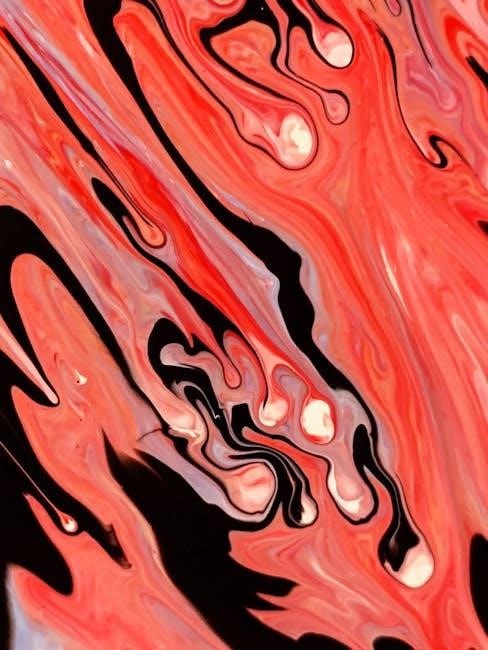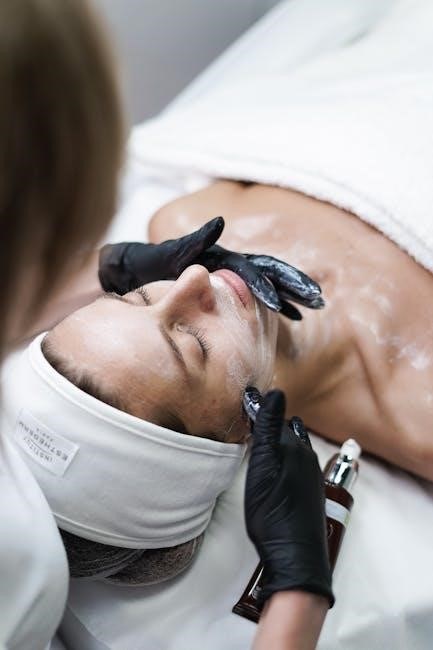aesthetics and psychobiology berlyne pdf

Aesthetics and psychobiology explores human emotional responses to art, examining perception, personality, and cultural considerations, as seen in D. E. Berlyne’s work, influencing various fields of study and research programs.
Background Information on D. E. Berlyne
D. E. Berlyne was a prominent figure in the field of aesthetics and psychobiology, with a notable career spanning several decades. He authored the book Aesthetics and Psychobiology in 1971, published by Appleton-Century-Crofts. Berlyne’s work focused on the emotional and cognitive aspects of human responses to art, exploring the complex relationships between perception, personality, and cultural influences. As a researcher, he initiated an extensive program on experimental aesthetics, which led to significant advancements in the field. Berlyne’s contributions have had a lasting impact on the study of aesthetics and psychobiology, with his work continuing to influence research in various fields, including psychology, philosophy, and art theory. His book remains a seminal work in the field, offering valuable insights into the human experience of art and its role in shaping our emotional and cognitive lives. Berlyne’s legacy serves as a foundation for ongoing research and inquiry into the complex and multifaceted nature of human aesthetic responses.

Overview of the Book Aesthetics and Psychobiology
D. E. Berlyne’s book explores art, emotion, and perception, discussing aesthetics and psychobiology concepts, published in 1971 by Appleton-Century-Crofts, a seminal work in the field of study.
Publication Details of the Book
The book Aesthetics and Psychobiology by D. E. Berlyne was published in 1971 by Appleton-Century-Crofts, with a total of xiv and 336 pages, including illustrations, measuring 25 cm in size. The book’s publication details are significant as it marks a notable contribution to the field of aesthetics and psychobiology. The publisher, Appleton-Century-Crofts, played a crucial role in disseminating Berlyne’s work to a wider audience. The book’s format and content have been widely cited and referenced in various studies and research papers. The publication of Aesthetics and Psychobiology in 1971 has had a lasting impact on the field, with many researchers and scholars continuing to draw upon Berlyne’s ideas and concepts. The book’s details, including its publication date and publisher, are essential for understanding the context and significance of Berlyne’s work. The book is available in various libraries and can be accessed through different channels, including online platforms and academic databases. Overall, the publication details of Aesthetics and Psychobiology provide valuable insights into the book’s significance and relevance.

Key Concepts Discussed in the Book
Art as communication, emotion, arousal, perception, and personality are examined in the book, influencing aesthetic responses and behaviors, with various concepts and theories explored in depth and detail always.
Art as Communication and Emotion
According to D. E. Berlyne’s work, art serves as a means of communication, conveying emotions and ideas between the creator and the viewer, with the potential to evoke feelings and arousal in the audience. The relationship between art and emotion is complex, involving various psychological and neurological processes that influence an individual’s aesthetic experience. Berlyne’s research in aesthetics and psychobiology explores the role of emotion in art perception, examining how different factors, such as personality and cultural background, impact an individual’s emotional response to art. The study of art as communication and emotion is essential in understanding the psychological and social significance of art, providing insights into the human experience and the ways in which art can shape and reflect our emotions and values. By examining the emotional aspects of art, researchers can gain a deeper understanding of the complex interactions between art, the viewer, and the environment.

Research Program on Experimental Aesthetics
Experimental aesthetics investigates human responses to art, using methods to study aesthetic experiences and preferences, as seen in Berlyne’s research program.
Impact of Berlyne’s Work on Aesthetic Responses
D. E. Berlyne’s work has significantly influenced the study of aesthetic responses, with his psychobiological model providing a foundation for understanding human emotional reactions to art. His research has been widely cited and built upon, with many scholars exploring the role of arousal, perception, and personality in shaping aesthetic experiences. The impact of Berlyne’s work can be seen in various fields, including psychology, philosophy, and art history, where his ideas have been applied to study the complexities of human aesthetic responses. Furthermore, Berlyne’s emphasis on the importance of empirical research in aesthetics has led to the development of new methodologies and approaches, enabling researchers to investigate aesthetic responses in a more systematic and rigorous manner. Overall, Berlyne’s work has had a profound impact on our understanding of aesthetic responses, and his ideas continue to inspire new research and scholarship in this area, with ongoing studies and applications of his theories.

Criticisms and Extensions of Berlyne’s Psychobiological Model
Researchers have proposed alternatives and modifications to Berlyne’s model, addressing limitations and expanding its scope to include new perspectives and findings on aesthetic responses and experiences.
Applications of Aesthetics and Psychobiology in Various Fields
The study of aesthetics and psychobiology has far-reaching implications for various fields, including art, design, and psychology. Researchers have applied the principles of aesthetics and psychobiology to understand human behavior and preferences in different contexts, such as music, literature, and visual arts. The insights gained from this field have been used to inform the development of art therapies, museum exhibits, and public art installations. Additionally, the study of aesthetics and psychobiology has influenced the design of products, environments, and experiences, with the goal of creating more pleasing and engaging interactions. By understanding the psychological and neurological mechanisms that underlie aesthetic experiences, professionals in various fields can create more effective and impactful designs, leading to improved user experiences and outcomes. This has led to the growth of new areas of study, such as neuroaesthetics and design psychology, which continue to expand our understanding of the complex relationships between aesthetics, psychology, and human behavior.
and Future Directions
The study of aesthetics and psychobiology has come a long way since Berlyne’s pioneering work, with significant advancements in our understanding of the complex relationships between art, emotion, and human behavior. As researchers continue to explore the neural mechanisms underlying aesthetic experiences, new avenues of investigation have emerged, including the role of attention, memory, and social context in shaping our responses to art. The development of innovative methodologies, such as neuroimaging and machine learning, has also enabled researchers to examine aesthetic phenomena with greater precision and depth. Looking ahead, future studies will likely focus on the application of aesthetics and psychobiology to real-world problems, such as designing more effective art therapies, improving museum exhibits, and enhancing public engagement with art. By integrating insights from aesthetics, psychology, and neuroscience, researchers can unlock new possibilities for promoting well-being, creativity, and cultural enrichment. This will require continued collaboration across disciplines and a commitment to advancing our understanding of the intricate relationships between art, mind, and brain.